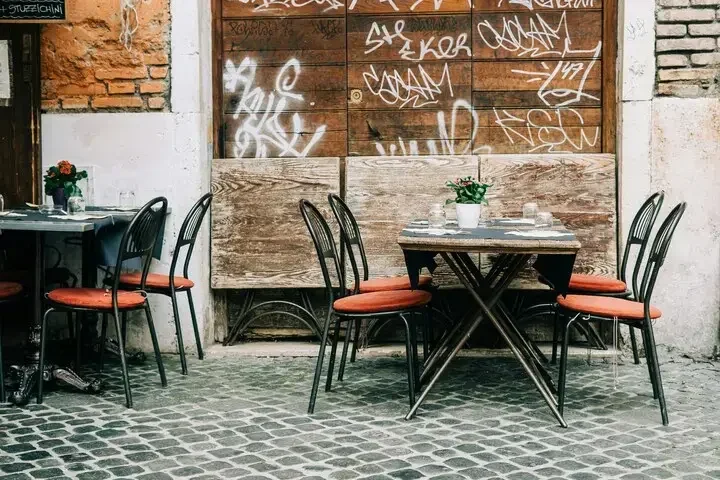Day 1: Euljiro – "Hipjiro" Industrial Cool
Once an industrial backwater, now a gritty labyrinth of neon alleys and steel‑table pocha (tent bars). Craft beer, jukebox retro bars, and charming anju stalls jam the narrow streets. Euljiro’s narrow alleys are welding shops turned dive bars: locals drink, are loud, and spill out onto cracked concrete—no guided groups here. Euljiro is Seoul’s cracked‑steel sprawl, where neon flickers off welding sparks and the scent of grilled squid meets sudsy beer—no tourists, only locals clinking glasses under the iron glow.
Hipjiro Brewing – A warehouse‑turned‑brewpub pouring local IPAs amidst concrete columns and tools. It’s loud, honest, and fiercely local.
Nogari Alley – Rows of pojangmacha serving dried fish, cold beer, and quick soju pours. Eat standing, keep it fast, keep it fun.
SookHee Bar – Hidden behind a bland door near Myeongdong. Push in past the vanity mirror to find cocktails mixing Korean flavors with no‑frills elegance.
Day 2: Hongdae Basements – Live Indie & Punk Vibe
Skip the flashy clubs; head underground to intimate venues where bands get raw and audiences get sweaty. We’re talking unfiltered, and community‑driven—not staged to appeal to tourists. At the bottom of a Hongdae basement you’ll find the stage-less venue, Strange Fruit: just you, a shattered drum set and whiskey‑soaked audience. They don’t come for spectacle—they come for raw, honest guitar riffs.
Strange Fruit – No stage, no bullshit: bands play at eye‑level, the whiskey is cheap, and the crowd is here to listen—not chase fads.
Gopchang Jeongol – Named after intestine hotpot, but this is a punk‑rock speakeasy: vintage LPs, retro Korean rock, and an anju ethos you didn't ask for but live for.
Cafe Unplugged – For acoustic nights and singer‑songwriters, close and quietly powerful. Dim lights, honest music.
Day 3: Traditional Markets & Late‑Night Soup Crawl
Ditch polished malls. Eat where the city became itself: in sweaty markets and historic soup joints. They have fed generations of Seoulites in the same seats—no Michelin stars needed to validate their credibility.
Tongin Market “Dosirak Café” – Buy brass tokens, line up at street stalls, pick grilled mung‑bean pancakes, gimbap, and stews. Locals shop here for lunch daily.
Mapo Ok (마포옥) – Since 1949, the locals’ go‑to for rich seolleongtang beef broth soup. Bib Gourmand listed and still raw comfort.
Cheongjinok (청진옥) – Fifth‑ranked oldest in Seoul, slinging heavy hangover soup (haejangguk) since 1937. They feed you broth and resurrection.
Day 4: Seochon / Ikseon-dong – Artisan Cafés & Hidden Bars
Residential alleyways with hanok cafés by day, low‑key speakeasies by night. Just people living life beyond the guidebook. They light up at night with locals hitting quiet bars, lingering over cocktails made with Korean herbs, telling stories that aren’t broadcast on travel ads.
Stroll Seochon & Ikseon‑dong: tiny gallery cafés, quiet tea houses hidden behind wooden gates, and local people quietly discussing art and politics over single‑origin beans.
Bar Cham (Jongno, Tongin-dong) – No gimmicks, oak counters, and cocktails that marry Korean liquors and local herbs. Subtle, smart, and to bury the lead, named one of the world’s top 50 bars.
End the night in a backyard pojangmacha in Seochon or Yonsei‑dori — neon signs flicker, muffled conversation, sliced squid or kimchi-jeon under a tarp, locals laughing with cheap makgeolli or soju.
More Favorites
If you noticed a theme, our Seoul travel picks are centered around good food, drink, and music. But, what about the kids?! Here’s a few for the little ones in our lives.
Let’s start with a little bit of history. Gyeongbokgung is a former royal palace in Seoul, South Korea. Established in 1395, it was the first royal palace of the Joseon dynasty, and is now one of the most significant tourist attractions in the country.
Gwangjang Market is full of energy and endless small dishes, perfect for adventurous kids and snack-grazing. It’s safe, casual, no table service — kids can watch food being made, talk to vendors, and try new tastes without pressure.
And, finally, Museum SAN! It’s a little outside the city-center, but worth it. Museum SAN is where modern art meets nature via beautiful walking trails through the mountains of Wonju. SAN is a day trip, but it’s where Korean families go for mindful nature breaks.















